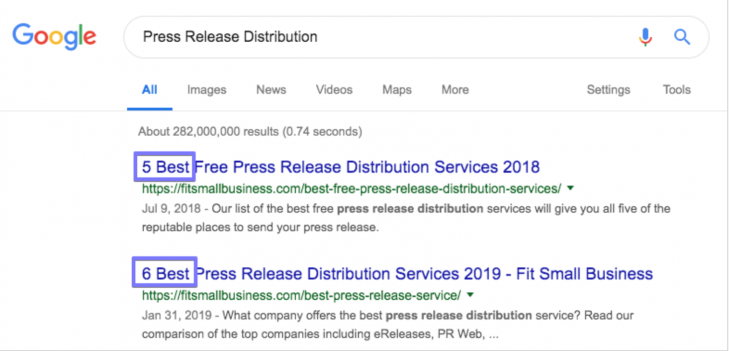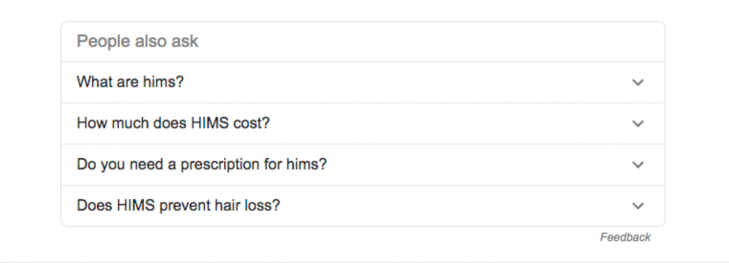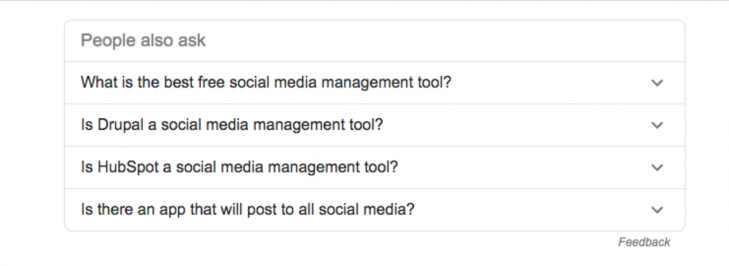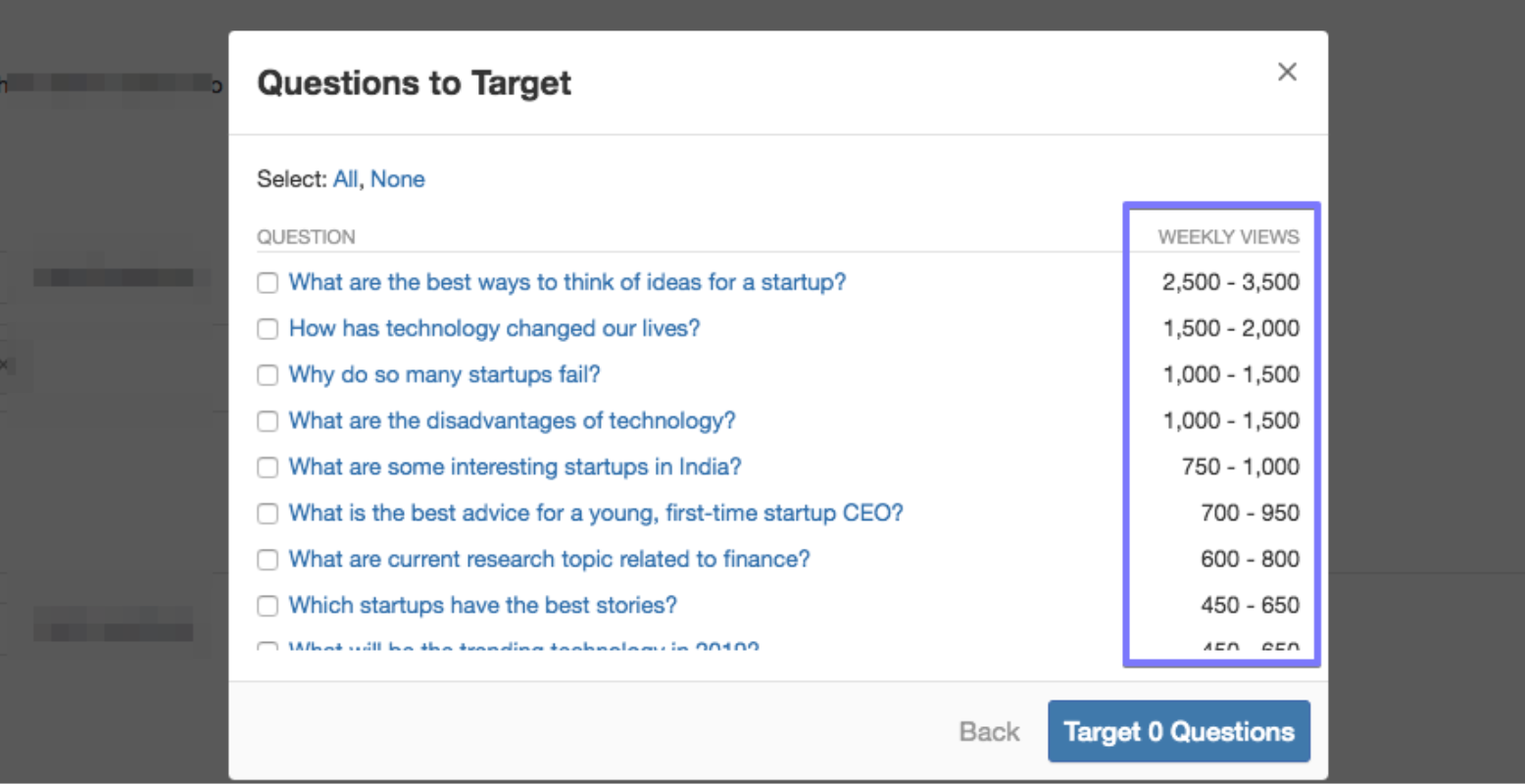In 2019, it’s estimated that every minute there are 150 new websites coming online. While many of these won’t be long-term ventures, a large percentage will eventually find themselves looking to organic search engine traffic to grow their reach.
This invariably leads people to the task of keyword research; uncovering the search terms most likely to result in prospective customers.
With increased competition it’s imperative you don’t just focus on the traditional sources of keyword inspiration that every other business uses.
In the past year alone I’ve personally helped hundreds of business owners grow search engine traffic to their websites. This responsibility drives me to succeed in one key area: Finding relevant search terms to target that their competitors have likely missed.
In this article, I will highlight some of the most overlooked ideas and sources of data to reveal words and phrases relevant to your business that are high in intent but lacking in competition.
If you can find the keywords your audience are searching for, but your competitors haven’t found, you can leverage a huge advantage to increase traffic and engagement on your content.
Table of Contents
- Be Open to Talking About Your ‘Best’ Competition
- Use [Brand Alternatives] Search Terms to Gain Visibility
- Find Content Opportunities in the ‘People Also Ask’ Box
- Use Public Wikipedia Stats to See If a Term Is Worth Targeting
- Quora’s Ad Platform Reveals Popular Search Terms Without Spending a Penny
- Wikihow’s Public View Counts Are Great for Tutorial-Based Content Inspiration
- Bonus Tip: ProductHunt Dominate ‘Alternatives’ Keywords: Make Sure You Have a Listing There
- To Recap
1. Be Open to Talking About Your ‘Best’ Competition
Google is constantly improving their ability to understand searcher intent. That is, they know what people are looking for and the results that will satisfy those searches.
When it comes to any industry that offers products or services, one of the most common search queries is often some variation of “best [industry] [services / products]”.
For instance, “best beauty subscriptions” or “best massage chairs for seniors”.
In these cases, even if it’s exactly what you want to rank for, it’s increasingly rare for Google to just let a single service or product offering shine through in the search results.
Instead, they’re much more likely to display results that list the best products and services that people can read about and then decide on for themselves.
Here’s a great example of that from the world of PR. Even broad search terms such as ‘Press Release Distribution’ will pull up ‘best list’ articles:

If you run a press release distribution service you either need to make sure you’re mentioned on those lists, or you probably put together such an article yourself.
While talking about your competitors may go against your natural instincts, you can at least position your own offering in its best light.
For example, UserBrain wrote a piece on the 10 Best Customer Feedback Tools featuring their own service and nine of their competitors. They also interspersed calls to action to their own site throughout.
When Buffer* put together a post on the 25 Best Social Media Management Tools they put their own service at #1, before two dozen competitors.
If you see the search results around your product or service offering favor blog-style lists of the best options, you should open your mind to the idea of creating such an article yourself.
2. Use [Brand Alternatives] Search Terms to Gain Visibility
While support-ticket Saas company Zendesk has tens of thousands of happy customers, an estimated 400 people in the US search for ‘Zendesk alternative’ each month.
The first result, I have to admit, is genius.
An exact-match domain name for Zendesk alternative is what you’ll probably see:

This isn’t a competitor site trying to use Zendesk trademarks under the radar.
The site introduces you to Zendesk Alternative – an alternative rock band (see what they did there?) made up of actual Zendesk staff members.

The whole minisite is an excellent example of creative reputation management and gives you the chance to fall back in love with Zendesk again rather than switching to a competitor.
Social proof software Fomo, popular with eCommerce stores to show their latest sales in real-time, also have a smart approach to this.
They currently occupy the top results for any kind of alternative-related query around their brand.

Surprisingly, they openly recommend another company they would be happy for their potential customers to use instead.
Intentional or not, by being so open and honest they engender more trust in their own offering (though, further down the page, they’re not so kind about another competitor).
If your brand isn’t already big enough to have people searching for alternatives then you probably have competitors who are.
Pipefy has taken advantage of knowing that their potential customers will be searching for alternative services of their competitors.
They created a page titled ‘Process Street Alternative’ to ensure that they could siphon customers away from their rival.

You don’t have to create any industry drama by talking badly about anyone; you can simply show off your own features as they’ve done.
3. Find Content Opportunities in the ‘People Also Ask’ Box
If your company is already reasonably well-known, you might find that a simple search for your brand name reveals different questions that people are asking about you.
That’s certainly the case for Hims, who recently raised $100m.

If you don’t have content answering these specific questions you might not only be missing out on direct search traffic but also the chance to control more of the conversation about your company.
If (like most of us) your company is either too small or unknown and people aren’t asking questions about your brand then think about your industry as a whole.
There’s a good chance that people are asking questions about specific aspects of your niche that you can educate people about.
As a good example, the search query ‘social media management tool’ features a lot of competing services. The ‘People Also Ask’ box shows further questions some searches are having:

If you consider the first and fourth questions (What is the best free social media management tool? and Is there an app that will post to all social media?) they provide inspiration for articles that any related tool provider could easily put together.
The best thing about ‘People Always Ask’ boxes is that every time you click on an individual question, Google adds even more suggestions below it.
Thanks to this, you can get dozens of ideas from a single search query.
4. Use Public Wikipedia Stats to See If a Term Is Worth Targeting
While Wikipedia’s dominance in search results tends to be pretty well established when it comes to broad keyphrases, they can be a great indicator as to whether people are still actually searching for something (and how often).
Thanks to the Wikimedia Foundations Pageviews Analysis tool you can see the exact pageviews to any article on Wikipedia.
So, if a Wikipedia article is listed highly in the search results you may plan to target yourself, you can get a good idea of how many visitors that might be sending their way.
Below, we can see that over the last 90 days, their English-language page on project management professional has been viewed over 60,000 times.

If you want to take this to the next level, we don’t have to stop there.
Perhaps you’ve considered translating your site into other languages to broaden your reach but aren’t entirely sure which ones to target?
The tool will also tell you which non-English versions of a page are getting the most views:

You can use this to translate articles one at a time or find a single new language to focus on.
5. Quora’s Ad Platform Reveals Popular Search Terms Without Spending a Penny
While Quora doesn’t only rely on traffic from search engines, they do receive an estimated 124 million visitors from Google each month.
To monetize that huge amount of traffic, Quora has its own ad platform.
Signing up for their ads platform doesn’t mean you have to create any ads – although you might want to do that anyway.
We want to create an account so that you can get access to some great data to work from. Once you have access, simply create a new campaign and focus on Question Targeting.
From there, enter a few keywords related to your industry and Quora will show you how many views the top questions pick up:

If the question is more than a few weeks old, which it more than likely is, then you’re probably safe to assume it’s ranking well in Google and receiving the majority of those views from organic rankings.
You can then use these stats as the basis for content you may wish to answer in-depth on your own website.
This one technique alone can provide the inspiration for months’ worth of content that will resonate with your audience.
6. Wikihow’s Public View Counts Are Great for Tutorial-Based Content Inspiration
Wikihow doesn’t reach quite as many people as Quora each month but you’ve likely seen them in your search results in the past year.
According to SEMRush data, Google brings just less than one million visitors to Wikihow every single day. Ahrefs* predicts they receive just over one million per day.
Either way, search engine traffic accounts for a lot of views of Wikihow content and when they’re so open about how many views each article gets, you can use that to your advantage.
Think of a broad term your website covers, such as ‘gentlemen’ for a relationship site or ‘dog’ for a pet food site and see what their search results pullback:

SimilarWeb estimates 85% of traffic that goes to Wikihow is from search engines. Therefore, we can confidently assume that if a phrase such as ‘How to be a modern gentleman’ has 393,697 views it’s a popular term searched for on Google.
It also means a lot of traffic can be sent to top results with content targeting that keyword phrase.
Like Quora, Wikihow is an endless source of inspiration for content you could be creating.
Bonus Tip: ProductHunt Dominate ‘Alternatives’ Keywords: Make Sure You Have a Listing There
Even if you don’t have a product likely to make it on the top stories on the day for ProductHunt, you should still be there.
Why?
They’ve grown search traffic dramatically by ranking for ‘alternatives’-related search terms for a lot of different products.
According to Ahrefs*, they bring in around 250,000 visitors per month – just in the US – for various related rankings.
It’s the second most popular subdirectory on their entire site:

The nice thing about ProductHunt is that you can list a Saas company, product, service, app, minisite and more. You don’t just have to submit a certain type of online offering.
Then, when people are looking for alternatives to large brands in your space, you have the opportunity to get recognized thanks to the search traffic they already pick up.
Having a presence on sites like G2.com and Capterra is also recommended if you have a product or service that people are prone to want to review.
To Recap
Of course, finding the right keywords and phrases to target is only half of the job. You then have to use them in the right way to get results.
That’s a vast subject in itself I would love to cover in a future update, but what’s essential to focus on is creating content that has the best chance of satisfying a users’ query and provides a lot of value in the process.
Using key platforms like Quora, Pageview Analytics, Wikihow and more, you can find a content-gap your competitors aren’t yet targeting and leverage those ideas with future content.
From there, it’s all about delivering on the promise your headline sells.
*Disclosure: I have worked with Ahrefs and Buffer in the past, although I don’t currently, and I don’t otherwise have a financial interest in either company.
